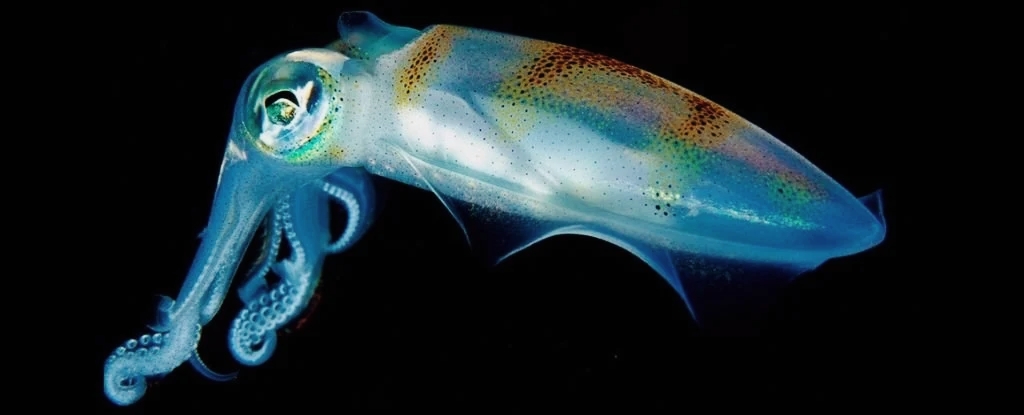 |
(Maia Valenzuela/Flickr/CC BY 2.0) |
Inshore squid (Doryteuthis opalescens) are among the most
evolved shapeshifters on the world. These fascinating cephalopods have a
distinctive skin that can be precisely calibrated to a rainbow of colors.
The extraordinary camouflage and communication abilities of
this squid have long captivated scientists. New research has taken us closer to
understanding how they manage to dress in such an eclectic manner that helps
them to hunt near the shore, sneak past predators unnoticed, and even elude
hostile suitors by flashing a pair of fake testes.
According to previous research, the opalescent squid's skin
contains a complex molecular machine: a thin film of stacked cells that can
expand and contract like an accordion to reflect the entire visible spectrum of
light, from red and orange to yellow and green, blue and violet.
According to the researchers, these tiny grooves are similar
to those found on a compact disk, reflecting a rainbow of colors as you tilt it
under the light. This skin, like a CD, needs something to amplify up the
colorful noise.
When scientists tried to genetically manipulate the skin of
this squid, they found something wasn't quite right.
Reflectin proteins, which respond to different neural
signals and regulate reflective pigment cells, are the ‘motor' that tunes the grooves
within the squid's skin.
Synthetic materials containing reflectin proteins have an
iridescent appearance similar to that of squid, but they do not flicker or
shimmer like squid.
Something was obviously missing, and new research involving
living squid and genetic engineering has shed light on the mystery. Reflectin
proteins, it turns out, can only shine brilliantly when wrapped in a reflective
membrane envelope.
The accordion-like mechanism is enclosed by this envelope,
and peering under it, you can see how it functions.
Reflectin proteins are normally repellent to one another,
but a neuronal signal from the squid's brain may turn off their positive
charge, causing them to clump together.
As this occurs, the overlying membrane pushes water out of
the cell, causing the grooves to shrink in thickness and spacing, splitting
light into different colors.
The concentration of reflectin increases as the grooves
collapse, allowing the light to reflect even brighter.
This intricate mechanism "dynamically [tunes] the color
while simultaneously increasing the intensity of the reflected light,"
according to the writers, and this is what causes the opalescent squid to
shimmer and flicker, sometimes with color and sometimes without.
The same molecular mechanism appears to drive cells inside
the squid's skin that display only white light. In reality, the authors assume
that this is how the squid can mimic the sun's glinting or dappled light on the
waves.
According to biochemist Daniel Morse of the University of
California, Santa Barbara, evolution has so exquisitely programmed not only
color tuning, but brightness tuning using the same stuff, the same protein, and
the same mechanism.
Engineers have been attempting to replicate the opalescent
squid's extraordinary skin for years but have never succeeded. The new study,
which was funded by the US Army Research Office, has assisted us in determining
where we went wrong.
The authors conclude that thin films of reflectin alone
cannot deliver the full power of light control seen in squid because we lack
the coupled amplifier.
There is no improvement in the brightness of these
artificial thin-films without the membrane covering the reflectins, according
to Morse.
If we want to harness the biological's strength, we'll need
to have a membrane-like enclosure that allows for reversible brightness
adjustment.
Originally Published In Applied Physics Letter




0 Comments